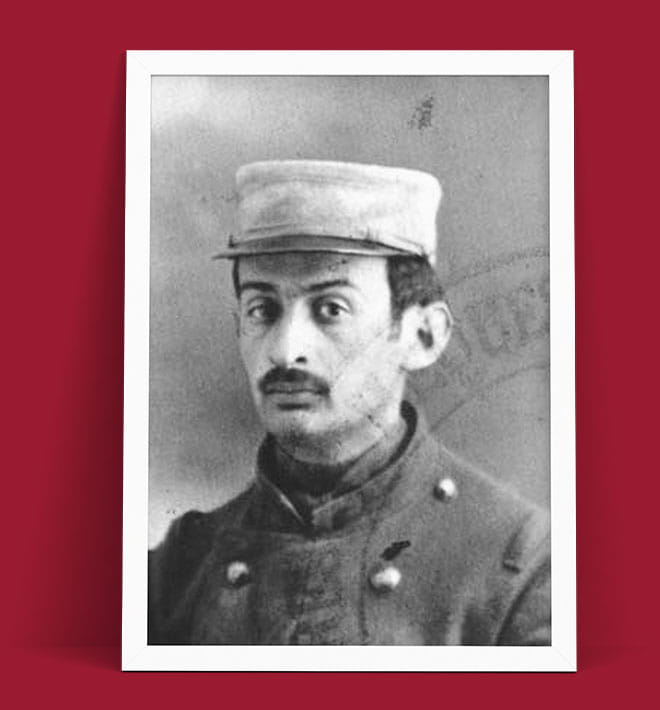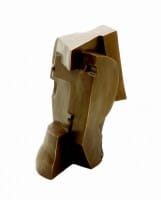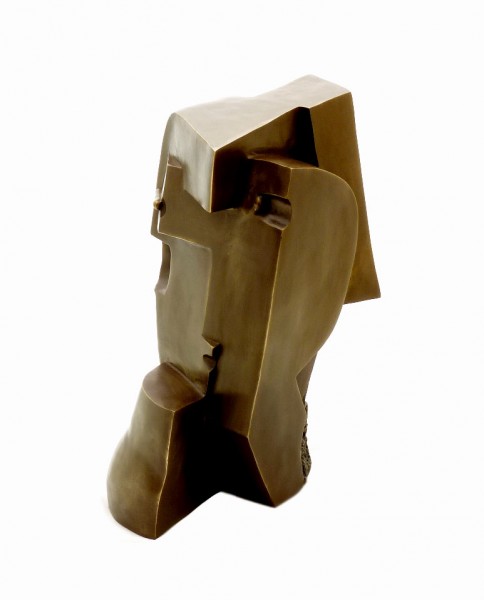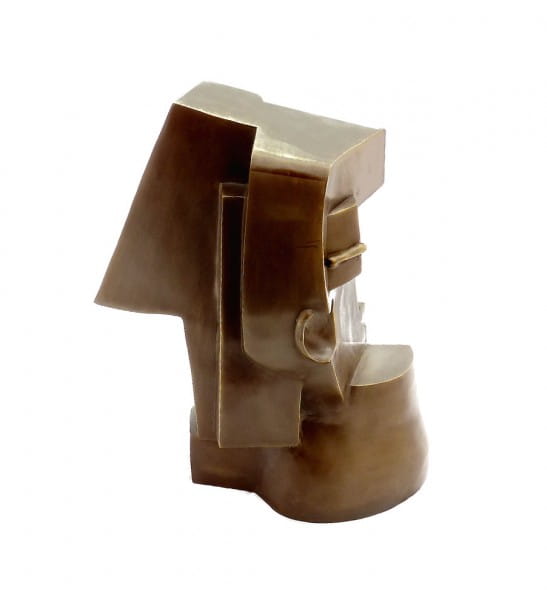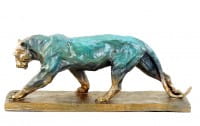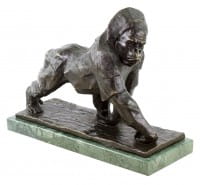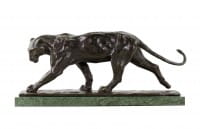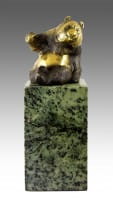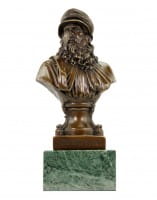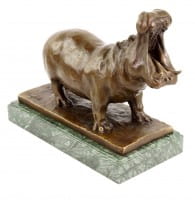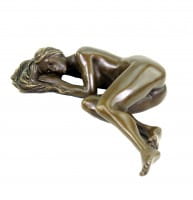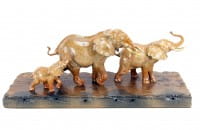Prices incl. VAT, free shipping worldwide
Ready to ship today,
Delivery time appr. 3-6 workdays










Product description
"Cubism Sculpture - Otto Gutfreund - The Head"
| Weight | 16,8 kg |
Abstract Sculpture - The Head 1919 - Cubism Bronze - Signed Otto Gutfreund
Among the most refined and architecturally precise examples of early 20th-century abstraction, Otto Gutfreund’s “The Head” (1919) represents a turning point in the development of cubism sculpture. This bronze, limited to only 20 signed casts, is a declaration of sculptural intelligence and modernist poise. Conceived in the intellectually fertile atmosphere of postwar Europe and forged in the artist’s singular sculptural language, The Head dispenses with all ornament and sentimentality in favor of distilled structural clarity. The work stands not merely as a head, but as an idea—a sculpture in which thought and volume converge in exacting harmony.
A Formative Journey from Bohemia to the Vanguard
Otto Gutfreund was born on August 3, 1889, in Dvůr Králové nad Labem, a provincial town in what was then the Austro-Hungarian Empire. From an early age, he demonstrated an exceptional aptitude for material and structure, which led him to study ceramics in Bechyně and later at the School of Applied Arts in Prague. These early years laid the groundwork for a deep understanding of surface, tactility, and volumetric precision. In 1910, Gutfreund relocated to Paris to attend the Académie de la Grande Chaumière, where he studied under Antoine Bourdelle and came into direct contact with the revolutionary aesthetics of Cubism. Unlike his French contemporaries, however, Gutfreund envisioned cubism sculpture not as a translation of painting into volume, but as an autonomous discipline grounded in architectural logic and spatial consciousness.
A Postwar Vocabulary of Structure and Restraint
By 1919, Europe was emerging from the devastating effects of the First World War. The radical, fractured experimentation of prewar Cubism gave way to a new aesthetic language—calmer, more rational, and imbued with an almost classical sense of order. Gutfreund’s The Head exemplifies this shift. Gone are the eruptive surfaces and violent torsions of his earlier reliefs. In their place stands a sculpture of absolute control and formal purity. Yet the work remains deeply modern, not by negating the innovations of Cubism but by elevating them into a realm of geometric elegance. This is cubism sculpture at its most distilled—reduced to planes, edges, and intersecting masses, without sacrificing human presence or conceptual weight.
The Head as Ideogram of the Modern Self
Despite its radical abstraction, The Head retains the unmistakable silhouette of a human profile. The brow, nose, and mouth are rendered as interlocking geometries—each one a component of a larger system, rather than an isolated feature. The ear becomes a curved recess, not for anatomical accuracy but for spatial rhythm. The back of the head tapers in angular ascent, like a modernist ziggurat or machine component, alluding to both mechanical precision and spiritual aspiration. In this way, The Head becomes an archetype: not a portrait of any individual, but a symbol of the modern intellect and the new postwar psyche. Gutfreund does not sculpt likeness; he sculpts meaning.
Material, Method, and the Language of Bronze
In bronze, The Head takes on a solidity that enhances its architectonic presence. Every angle is deliberate, every transition calculated. The surface is smooth, almost machinic, with no superfluous detail to distract from the underlying geometry. Yet the sculpture is not cold—it exudes a quiet intensity, a contemplative dignity. The patina is a rich, matte brown, absorbing light rather than reflecting it, adding to the object’s monolithic gravitas. Gutfreund’s mastery lies in his ability to make abstraction human and bronze eloquent—a hallmark of his most successful cubism sculpture.
Limited Edition, Unlimited Depth
Only 20 casts of The Head were ever produced, each one signed with Otto Gutfreund. This strict limitation speaks to the work’s intimate exclusivity and conceptual intentionality. It was not designed for broad public exhibition, but for discerning collectors and institutions that understood the radical shift it represented. As a cubism sculpture, it encapsulates the movement’s progression from formal rupture to intellectual balance. It is both object and statement—a compact, essentialized embodiment of an era’s search for truth in form.
An Artist at the Apex of Modernism
By 1919, Gutfreund had returned to his native Czechoslovakia, where he would later become a professor at the Academy of Fine Arts in Prague. Though his life was tragically short—he died in 1927 at the age of just 38—his impact was profound. His early reliefs, full of expressive energy, and his later, more measured works such as The Head show a rare trajectory: one that moves not from tradition to modernity, but from radical invention to classical clarity. In doing so, he helped define cubism sculpture not as a transient style, but as a rigorous visual language with limitless potential.
The Mind Made Visible
The Head is not a sculpture of a face. It is a sculpture of a concept. It invites contemplation from every angle, rewarding the viewer with shifts in perception and proportion. It is a work of silence and strength—both human and machine, both ancient and utterly modern. In its refusal of decorative flourish and its embrace of structural logic, The Head becomes a kind of sculptural philosophy: an assertion that truth in art lies not in imitation, but in essence. As a cornerstone of cubism sculpture, it remains one of the clearest and most enduring voices in the language of form.
Height: 54 cm
Width: 26 cm
Depth: 43 cm
Weight: 16,8 kg
100% Bronze
Our advantages
free shipping
Worldwide free shipping
14 days money back
You can cancel your order
within 14 days
secure payment services
Paypal, Master Card, Visa, American Express and more

